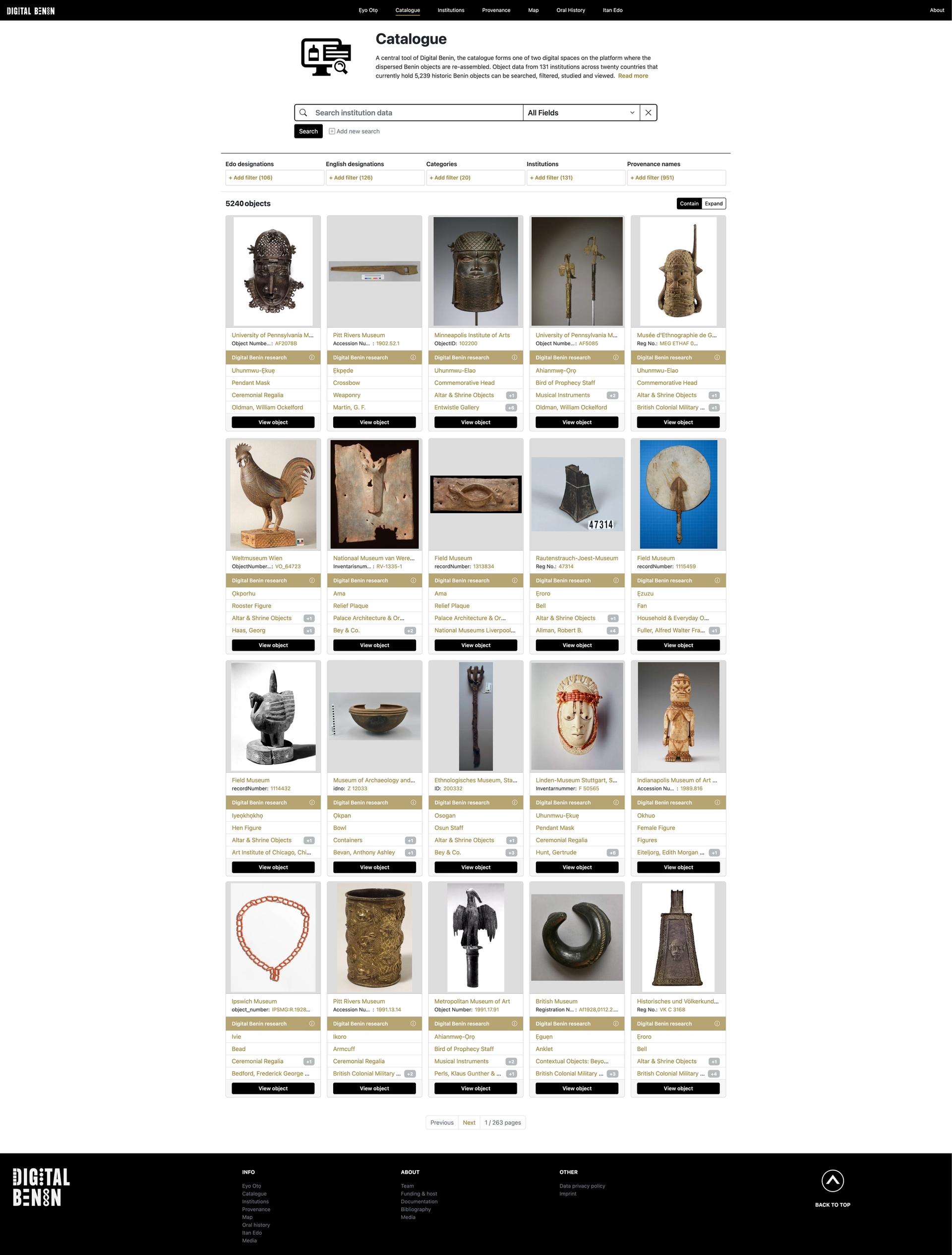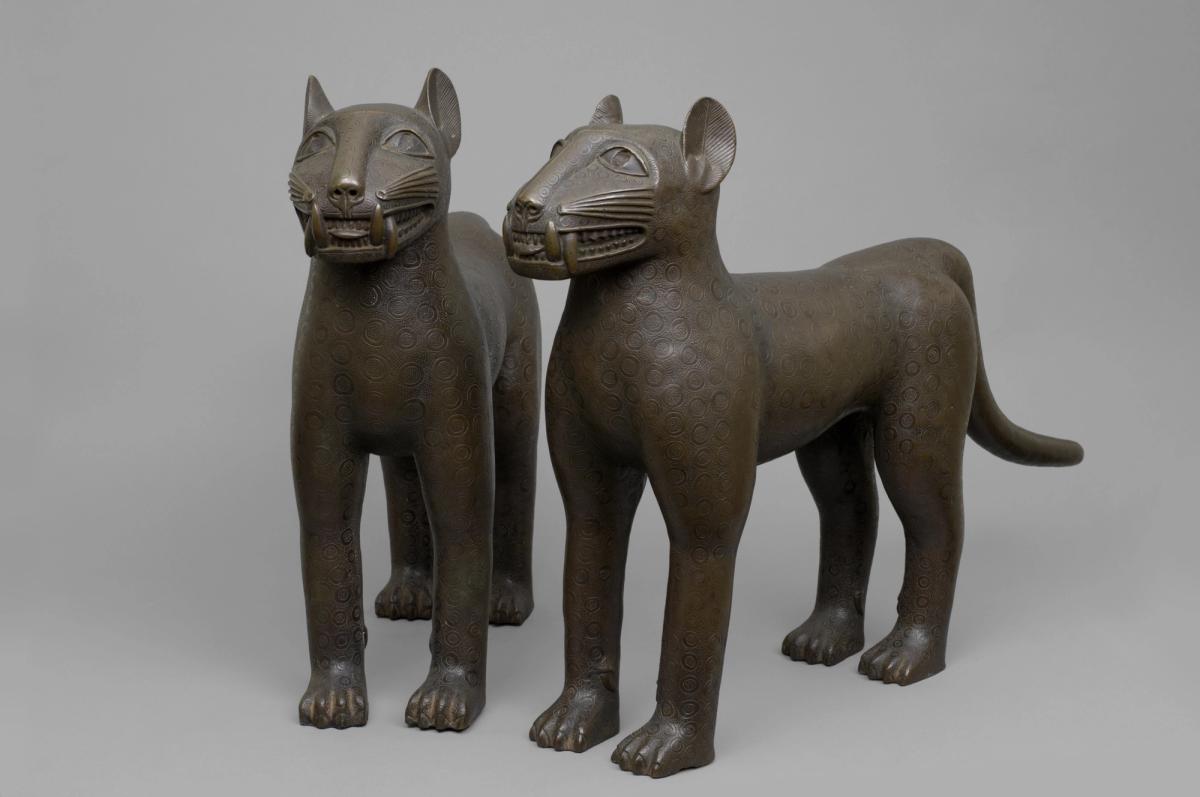A highly anticipated new online database listing works of art looted from the Kingdom of Benin has launched, shining a light on more than 5,000 looted objects housed at more than 100 museums worldwide. The timely new digital catalogue Digital Benin, described as the first “comprehensive database of the Benin bronzes” in a Financial Times report, could accelerate the restitution of the ancient African artefacts from institutions and collections worldwide.
The so-called Benin bronzes have become a touchstone to test European museums’ readiness to restitute heritage looted from Africa in the colonial era. After the violent 1897 plunder and devastation of the Royal Palace of Benin by British troops, at least 3,000 artefacts were dispersed internationally.
Digital Benin currently includes object data from 131 institutions across 20 countries that hold 5,246 historic Benin objects, which the website defines as “objects looted by British forces from the Kingdom of Benin (now Edo State, Nigeria) in February 1897 and distributed in its immediate aftermath”. Detailed entries include a type-name in the Edo language, the English language title of the work, provenance information and date provided directly by participating museums such as caption text and size.
A disclaimer on the site says that “it is important to underline that the quality of provenance data provided by museums varies considerably from one institution and from one object to another. The number of objects associated with these names is thus merely an indication of what has been documented by museums and not of the actual number of objects related to or indeed looted by them.”

A screenshot of the 'Digital Benin' website Agbontaen-Eghafona, K., Bodenstein, F., Coulson, I., de la Croix, E., Denis, K., Ekhator-Obogie, O. G., Fine, J., Horak, A., Luther, A., Obobaifo, E., Osaruemwinnomwan Oviahon, M., Plankensteiner, B., & Tiedemann, G., 9 November 2022.
The new inventory puts the spotlight once again on the British Museum, which holds the highest number of pieces from the kingdom of Benin (944), to return works to Nigeria. The British Museum is prohibited from permanently removing items from its collection under a 1963 UK law. It is, however, in talks with the Nigerian authorities to lend Benin objects to the planned Edo Museum of West African Art. Berlin’s Ethnological Museum has the largest contingent of Benin bronzes in Europe—518 according to Digital Benin—after the British Museum.
The team behind the new online platform is led by Barbara Plankensteiner, the director of Museum am Rothenbaum–World Cultures and Arts (MARKK) in Hamburg. It also comprises Felicity Bodenstein of the Sorbonne, Jonathan Fine—director of the Weltmuseum Wien in Vienna—and Anne Luther, an expert in digital humanities. The Ernst von Siemens Art Foundation initially provided €1.5m in funding for two years (2020-22) for the project with extra funding pledged for 2023.
For scholars in Nigeria, who have struggled to get access to both the objects and archive material that is mostly outside the country, the new database is a welcome prospect. Kokunre Agbontaen-Eghafona, a professor of cultural anthropology at the University of Benin told The Art Newspaper: “The looting was like a book being torn to pieces and then the pages were put in different places. Gathering them together in one place is great.”
An increasing number of institutions worldwide have pledged to return plundered works to Benin. The National Gallery of Art, the Smithsonian Institution’s National Museum of African Art and the Rhode Island School of Design Museum held a joint ceremony last month in Washington, DC, to mark the return of 31 Benin bronzes from their respective collections to Nigeria.
Earlier this year the German government moved forward with its ambitious restitution programme, signing a key agreement transferring ownership of more than 1,100 works to Nigeria. Two of the Benin bronze artefacts, a head of a king (or oba) and a 16th-century plaque, were handed over to the Nigerian representatives at a signing ceremony on 1 July. Germany has agreed to contribute to the construction of a new museum to house the Benin bronzes near the royal palace in Benin City, the Edo Museum of West African Art.



